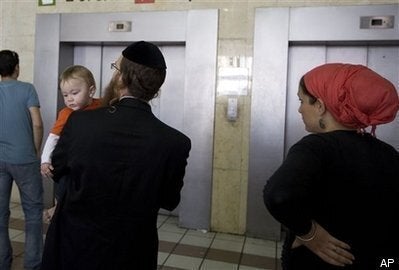
Last week's tragic elevator fatality in a Madison Avenue office building is the latest reminder that New York City's building inspection process is broken and in need of repair now -- before another senseless death. As I have urged for nearly two years, it is time for the city to create an independent office of inspections, so that the inherent conflict dividing the city's Department of Buildings (DOB) is eliminated.
Today, the DOB is responsible for both approving and policing building construction and maintenance. These conflicting roles under one roof do not serve the public's safety. An independent office of inspections would address the consistent need for stronger enforcement and bolster the city's capacity to inspect buildings, cranes and, yes, elevators -- all pieces of our urban super-structure that have failed in recent years, with tragic results. As it is, there is an enormous backlog of violations that remain unfixed, many of them serious.
The needless death last week of ad executive Suzanne Hart in a Madison Avenue office is just one example of how flawed our current system is. Since 1995, the city DOB has allowed privately hired companies to inspect a range of routine building components -- from roofs and boilers to sidewalk sheds and elevators. These private inspectors then "self-certify" their findings, meaning that the city takes their word that the inspection results are faithful and accurate.
That is the regulatory equivalent of the fox guarding the hen-house, and it needs to end. The FDNY's own data offers more proof that something is wrong: In FY 11, more than 36,000 people have been rescued from New York City elevators, a number that has more than doubled over the last two years. Clearly, something is not right.
This "self-certification" protocol was in place last week when Transel Elevator Inc. performed work on the elevator just hours before Hart's tragic death. Transel was effectively overseeing itself that morning, even though the city's last deadly elevator accident involved the same company. Robert Melito, a Transel technician, was repairing an elevator on the 10th floor of 230 West 38th Street on Sept. 23 when he plunged to his death.
The Department of Buildings will now conduct a through investigation of Transel buildings, but it shouldn't have taken a tragedy to prompt such a review. Nearly two years ago, I blew the whistle on this problem with the release of a report, "Falling Apart at the Seams: A Critical Analysis of New York City's Failure to Enforce Its Building Code and a Road Map to Reform." My study found disturbing problems with the sheer magnitude of serious building violations in Manhattan; we also uncovered severe deficiencies in the methods and procedures that the city employs to regulate building safety.
Beyond creating an independent office of inspections, our report recommended that the city begin a thorough auditing of self-certified building inspections for all safety-related categories. In theory, the Department of Buildings must audit 20 percent of these self-certified building inspection results. But anecdotal evidence suggests these audits are not happening, and there is no public disclosure of audit results. Without public disclosure, it is impossible to know whether the city is indeed conducting robust oversight of this process.
Indeed, the public has far too little information about the safety records of elevators. In an October 2008 report, my office revealed that elevators in New York City Housing Authority buildings were failing a shocking 75 percent of the time. At the time, I noted there is no meaningful public disclosure of elevator inspection results. The Department of Buildings classifies elevator inspection results simply as "satisfactory" or "unsatisfactory." There is no further detail. Citizens can't tell whether an "unsatisfactory" rating is the result of a broken light bulb, or something more serious.
Clearly, the city must rethink its approach to building inspections in light of this most recent tragedy. We need to give oversight of building safety and maintenance to an independent office of inspections -- and New Yorkers have a right to review elevator inspection results, with detailed and meaningful information available to them.